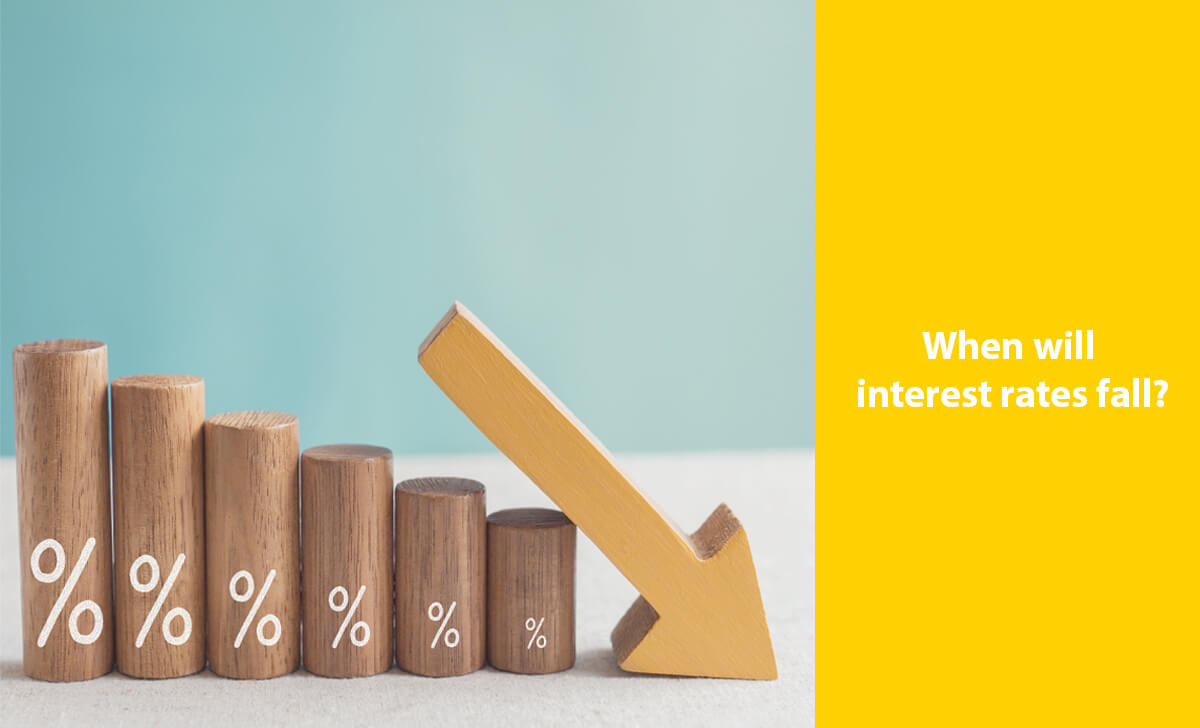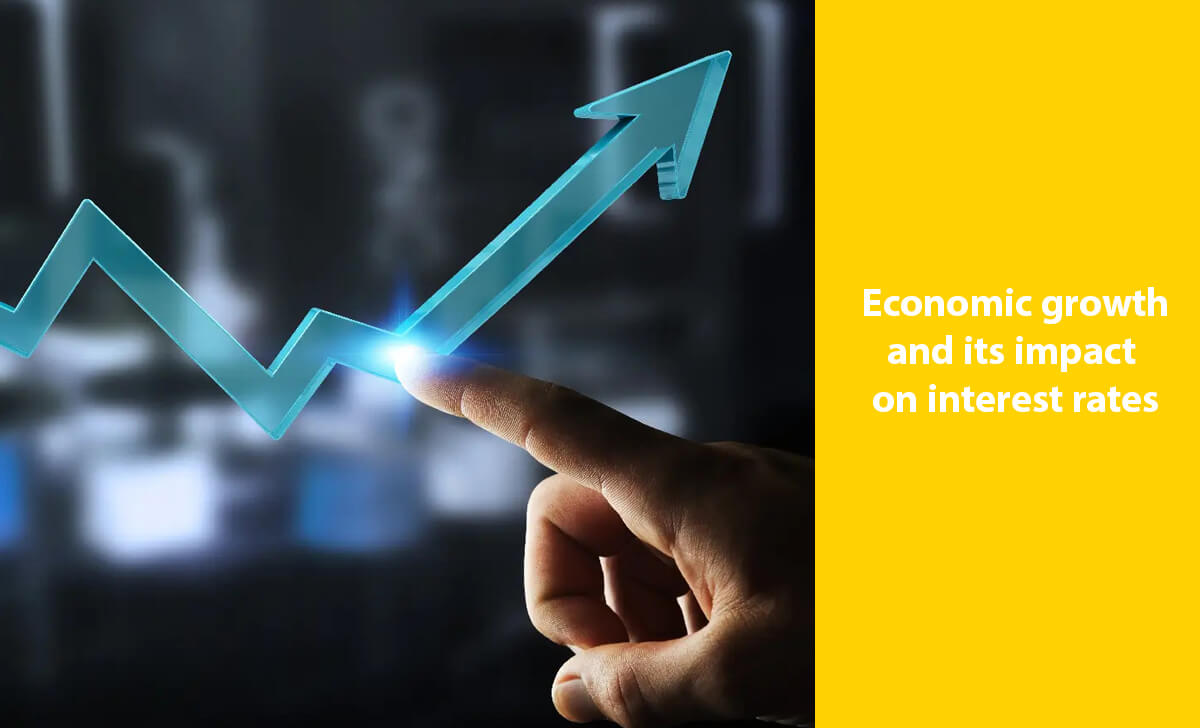Predicting projected interest rates in 5 years is a complex process, influenced by a myriad of factors from economics to global events. Although it is impossible to know for sure or predict what interest rates will be in 5 years. But we can also analyze current trends from historical data to economic forecasts.
In the following article, AZcoin will explore with you the factors that influence the projected interest rates in 5 years, the relationship between economic growth and inflation. The role of central banks and try to clarify when we can see interest rates decrease.
What are the projected interest rates in 5 years?

The projected interest rates in 5 years is a challenging task, as numerous macroeconomic variables and unpredictable events can influence their trajectory. Nevertheless, analyzing current trends, historical data, and economic forecasts can provide insights into potential scenarios.
- Current Economic Landscape: Persistent inflation, driven by supply chain disruptions and pent-up consumer demand, is being countered by central banks raising interest rates to cool economic activity and curb price pressures.
- Forecasts and Expert Opinions: Financial institutions have forecast that interest rate volatility will gradually decrease over the next five years. The Federal Reserve (Fed) forecasts that interest rates will remain high for many more months and refuses to predict future changes in interest rates.
- Uncertainties and Considerations: There are inherent uncertainties surrounding future interest rate movements. Unforeseen events such as a global recession, a sudden change in oil prices, or geopolitical instability, could have a significant impact on the trajectory of interest rates.
When will interest rates fall?

Determining when projected interest rates in 5 years is a difficult task. It depends on several factors, including inflation rates, economic growth, and central bank actions. However, economists and financial analysts often consider several key factors when making predictions, such as:
- Inflation and the impact of interest rates: When inflation is high, central banks often raise interest rates to curb consumer spending and slow the economy. When inflation begins to decline, central banks may consider lowering interest rates to stimulate economic growth.
- Economic growth and the impact on interest rates: When the economy is growing rapidly, businesses and consumers are more likely to borrow money, leading to increased demand for credit. This increased demand can push interest rates higher. Conversely, when economic growth slows, demand for credit decreases, putting downward pressure on interest rates.
- Central Bank Policy and Role: They use monetary policy tools, such as setting interest rate targets and buying or selling government bonds, to influence the cost of borrowing and lending in the economy. As inflation cools, central banks can shift to more accommodative monetary policy by lowering interest rates to stimulate economic activity.
Economic growth and its impact on interest rates

When the economy is expanding, businesses invest more, consumers spend more, and the demand for credit increases. Conversely, when economic growth slows, businesses are less willing to borrow, consumer spending falls, and the demand for credit falls. This reduced demand leads to lower interest rates.
Correlations and Connections
During strong economic expansions, central banks often raise interest rates to curb inflation and prevent the economy from overheating. Raising interest rates makes borrowing more expensive. When economic growth slows, central banks may lower interest rates to stimulate borrowing and encourage investment.
The Impact of Interest Rates on Economic Growth
Although rising interest rates can slow economic growth, they also have some benefits. Higher interest rates can discourage excessive borrowing and speculative activity, promoting financial stability. Additionally, higher interest rates can attract foreign investment, strengthen the currency, and make imports cheaper.
Forecasting Economic Growth
Economists analyze a variety of indicators, including GDP growth, unemployment rates, consumer confidence, and manufacturing activity. These indicators provide insight into the health of the economy and its future economic outlook, which helps economists predict where interest rates will move.
Besides, if you want to learn more, we suggest you check out other interesting content like: Store of Value, Michael Saylor,…
How does inflation affect projected interest rates in 5 years?

Inflation is the main factor influencing the expected movement of projected interest rates in 5 years. When inflation increases, the purchasing power of money decreases, which can lead to higher prices and a higher cost of living. To combat rising inflation, central banks often raise interest rates.
This makes borrowing more expensive for businesses and consumers, slowing economic activity and reducing demand, thereby helping to curb inflation.
- Inverse relationship: When inflation is high, central banks raise interest rates, and when inflation is low, central banks may lower interest rates. This relationship is based on the principle of managing inflation expectations. By raising interest rates, central banks want to demonstrate their commitment to controlling inflation and anchoring inflation expectations.
- Impact of inflation on interest rates: Eroding the value of money over time. To compensate for this erosion, lenders demand higher interest rates to ensure a real return on their loans. This leads to higher borrowing costs.
- Inflation expectations and central bank actions: Based on market forecasts and public sentiment. When inflation expectations are high, central banks may react more aggressively to curb inflation. This may lead to more aggressive interest rate hikes.
How do central banks determine interest rates?

Central banks use a range of monetary policy tools to influence borrowing and lending costs, which in turn influence economic activity and inflation. These decisions are guided by several key factors:
- Inflation and price stability are typically around 2%, when inflation rises, interest rates are also raised to restrain economic activity and slow inflation.
- During periods of weak economic growth and low employment, banks will lower interest rates to stimulate borrowing and investment. This in turn helps boost economic activity and create jobs
- Exchange rates and foreign investment help attract investors looking for higher returns, strengthening the domestic currency, and making imports cheaper. Conversely, lowering interest rates can weaken the domestic currency, making exports more competitive and imports more expensive.
- Weak global economic conditions may make central banks more reluctant to raise interest rates. If global inflation picks up, central banks may need to act more aggressively to curb domestic inflation.
Conclusion
So above we have helped you find information about projected interest rates in 5 years. Hopefully, the above content will be somewhat useful to you. If you need to learn more content, follow AZcoin right away!

I am Tony Vu, living in California, USA. I am currently the co-founder of AZCoin company, with many years of experience in the cryptocurrency market, I hope to bring you useful information and knowledge about virtual currency investment.
Email: [email protected]











